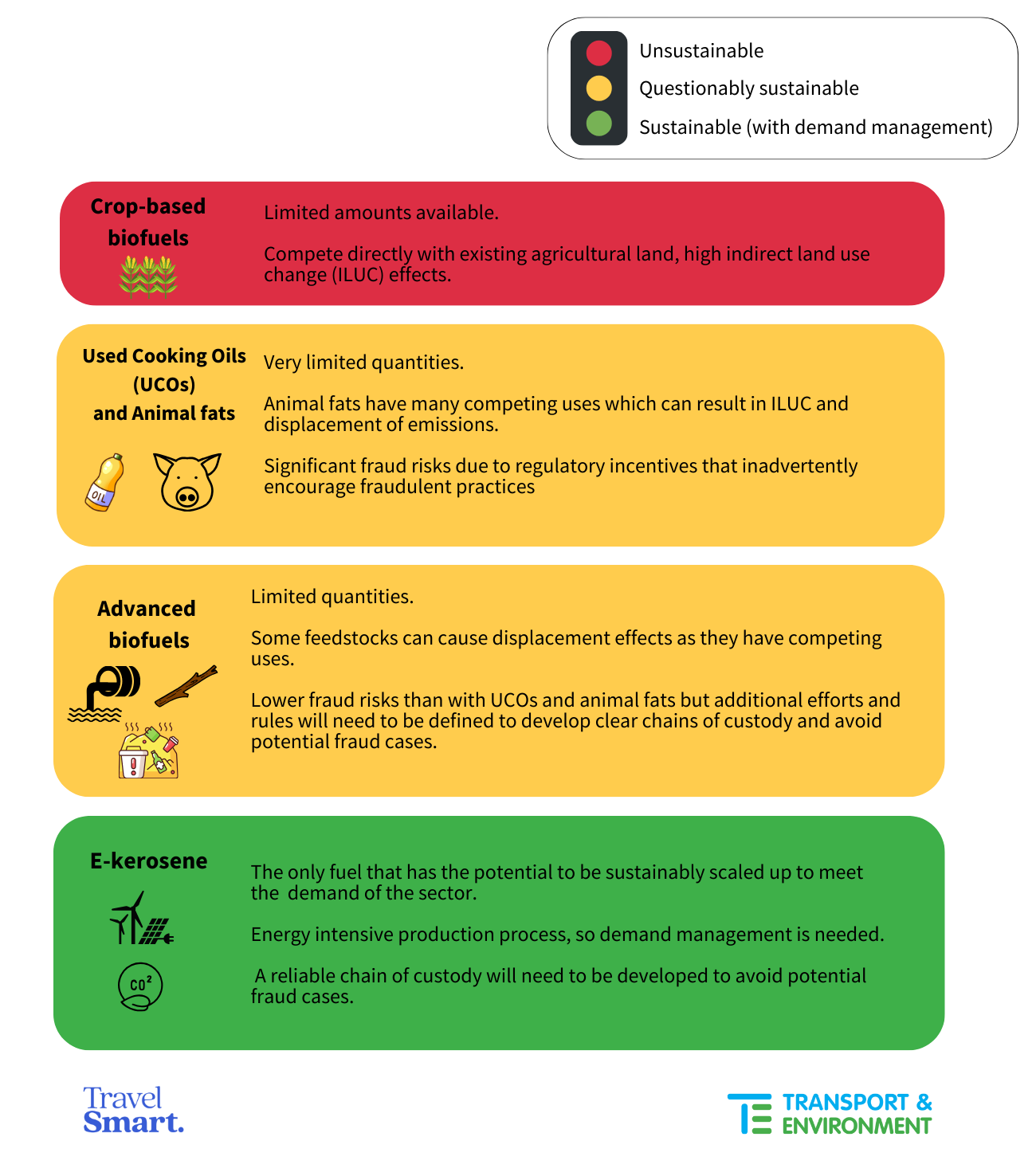Not all sustainable aviation fuels (SAFs) are equally sustainable. This is the main takeaway of a new briefing by Transport & Environment and the Travel Smart Campaign, that guides companies seeking to buy and invest in SAF for corporate travel. The new guide provides companies with in-depth information on sustainable fuels and how to read through the “green” label too often put next to it.
Corporations need to be discerning so as to make credible choices on their choice of green fuels. They should avoid purchasing crop-based biofuels at all costs and prioritise building towards synthetic fuels (known as e-kerosene) over other types of biofuels. Why?
- If produced correctly, e-kerosene has the potential to be close to CO2-neutral.
- On the other hand, the sustainability of biofuels is more questionable because they are only available in very limited quantities. Crop-based biofuels compete with food security. Waste-based biofuels (derived from used cooking oil, animal fats, or forest residues) are more sustainable, but they suffer from limited availability and competing uses in other industries.

The guide also warns that buying SAF does not mean flying on SAF. SAF is not physically available at all airports, mainly because they are produced only in a limited number of locations. As a result, most airlines or fuel producers offer the purchase not of physical SAF but of the environmental attribute of SAF.
More and more corporate SAF schemes are being set up by airlines and fuel suppliers as well as travel management platforms or corporate partnerships. However, it is impossible for companies to select the type of SAF they want to support. Therefore, companies should negotiate with airlines and/or fuel suppliers in order to have a say over the type of SAF they want to support.
Want to know more about how businesses can uptake and invest in SAF in a sustainable way? Read more about the do’s and don’ts in our guide.


